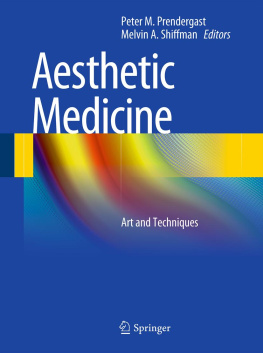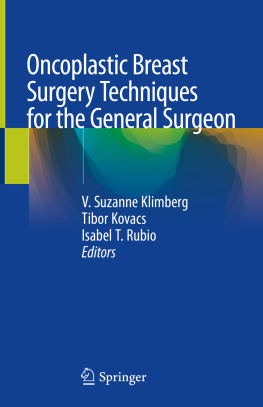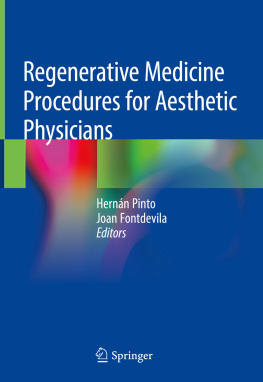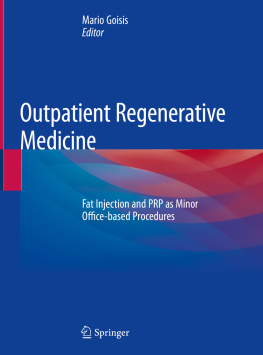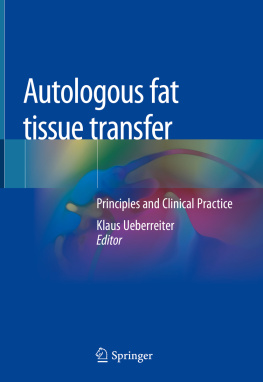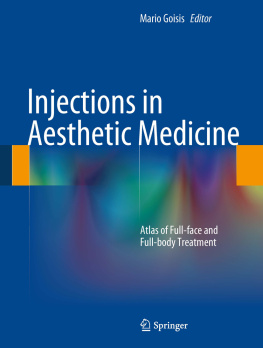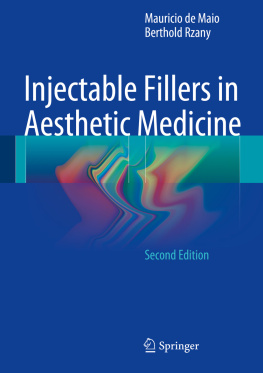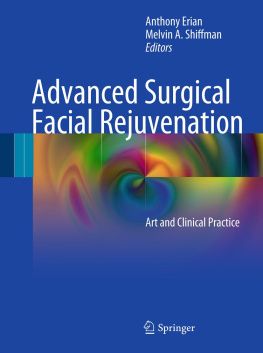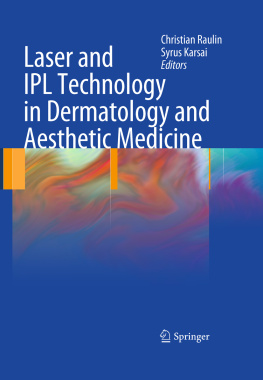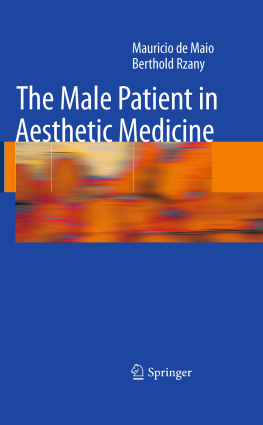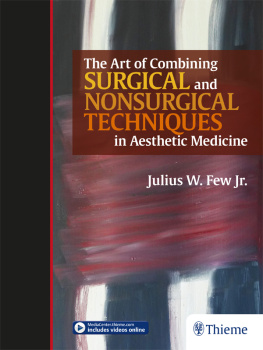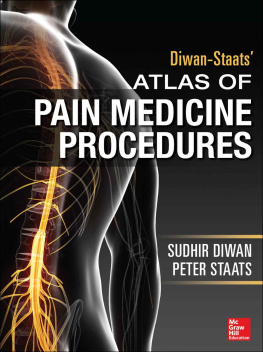1.1 Introduction
Aesthetic medicine is an art and a science. It is an emerging branch of medicine that relies on procedures and techniques to improve and enhance the appearance, texture, and contours of the skin, face, and body. Although some degree of overlap exists between aesthetic medicine and aesthetic surgery, for the most part, aesthetic medicine employs techniques and technologies that are either noninvasive or minimally invasive and performed without general anesthesia. Invasive surgical procedures that require significant tissue undermining, dissection, or skin excision, such as rhytidectomy, brachioplasty, and abdominoplasty remain the exclusive domain of aesthetic surgery, and are mostly performed in the hospital setting under general anesthesia. Typically, invasive procedures in aesthetic medicine require only dermal or subcutaneous injections, punctures, or small incisions. These include botulinum toxins, temporary fillers, fat transfer, suture lifts, and various forms of lipoplasty. These topics are covered in detail in this book.
The rapid growth in aesthetic medicine internationally is partly due to an increased patient demand for rejuvenating procedures that do not involve surgery. Patients request procedures not because they are unwell but because they want to look and feel better. This patient profile is unique to aesthetic medicine and surgery, in contrast to most other medical specialties where the focus is on the diagnosis and treatment of pathologies and illnesses. With the advent of botulinum toxins, hyaluronic acid fillers, and other nonsurgical procedures, patients can look and feel better quickly and discretely, with virtually no downtime. There is a natural enthusiasm for therapies that are quick, relatively painless, offer natural-looking but measurable results and cause little interruption to normal activities. Although aesthetic medicine has been embraced for this reason, it does not serve to replace aesthetic surgery. The relationship between the two disciplines is synergistic. Occasionally, less invasive techniques can be used in place of surgery for similar indications in patients who request them or where it is considered more appropriate (Table ).
Table 1.1
A comparison of options in aesthetic surgery and aesthetic medicine
Indication | Aesthetic surgery | Aesthetic medicine |
|---|
Face lift | Rhytidectomy, MACS lift | Suture lift |
Neck lift | Neck lift, platysmaplasty | Suture lift, tissue tightening, chemodenervation of platysma bands |
Brow lift | Foreheadplasty, endoscopic brow lift | Botulinum toxin, suture brow lift |
Lip enhancement | Surgical, mucosal advancement | Hyaluronic acid fillers |
Gummy smile | Surgical lip lengthening | Botulinum toxin |
Cheek or chin enhancement | Surgical implants | Augmentation with injectable fillers |
Nose reshaping | Rhinoplasty | Injectable fillers |
Skin laxity | Resection, e.g., abdominoplasty | Tissue tightening, e.g., radiofrequency |
Breast augmentation | Silicone/saline implants | Injectable hyaluronic acid or fat |
MACS minimal access cranial suspension
1.2 Origins of Aesthetic Medicine
Aesthetic medicine as it is practiced today has evolved from the pioneering efforts, inventions, and discoveries of individuals from a variety of medical and surgical specialties. Jean Carruthers, an ophthalmologist, discovered the remarkable aesthetic application of botulinum toxin []. Carbon dioxide laser skin resurfacing became popular in the early 1990s but has largely been replaced by safer, nonablative, or fractional resurfacing devices. Dermatologists, such as Goldberg, have made significant contributions to the dissemination of knowledge on the aesthetic applications of lasers and lights. Shiffman, a general, cosmetic, and oncologic surgeon, has further defined aesthetic medicine by writing and editing numerous books on topics such as liposuction, facial rejuvenation, and body contouring. Aesthetic medicine is therefore characterized by an eclectic collection of techniques, developed or derived from several disciplines, including dermatology, plastic and reconstructive surgery, laser medicine, and various other surgical subspecialties.
1.3 Procedures
Procedures in aesthetic medicine address most aging signs including abnormal skin pigmentation, skin laxity, ptosis, rhytids, fat loss, and contour irregularities such as the tear trough deformity. In addition, contouring of the face and body using fillers or lipoplasty is achieved to improve facial and lip volume, define the cheekbones, or remove unwanted fat. A summary of the most common procedures in aesthetic medicine is provided in Table .
Table 1.2
Procedures in aesthetic medicine
Indication | Treatment modality | Example products/devices |
|---|
Hyperdynamic rhytids | Chemodenervation | Botox, Dysport, Xeomin |
Lower face rhytids | STA with fillers | Restylane, Teosyal global action, Juvederm |
Facial contouring | STA with fillers, fat | SubQ, Teosyal ultimate, Radiesse |
Photoaging | Skin resurfacing | Fractional CO2 lasers, chemical peels |
Acne scarring | Micro-needling | Genuine dermaroller |
Textural irregularities | Microdermabrasion | SilkPeel |
Dyschromias | Selective photothermolysis | Intense pulsed light |
Telangiectasias, varicose veins | Sclerotherapy | Fibro-vein, sclerofoam |
Ptosis jowls, brow, cheeks, neck | Suture lifting techniques | Silhouette sutures, Anchorage sutures |
Skin laxity | Radiofrequency, infrared |

